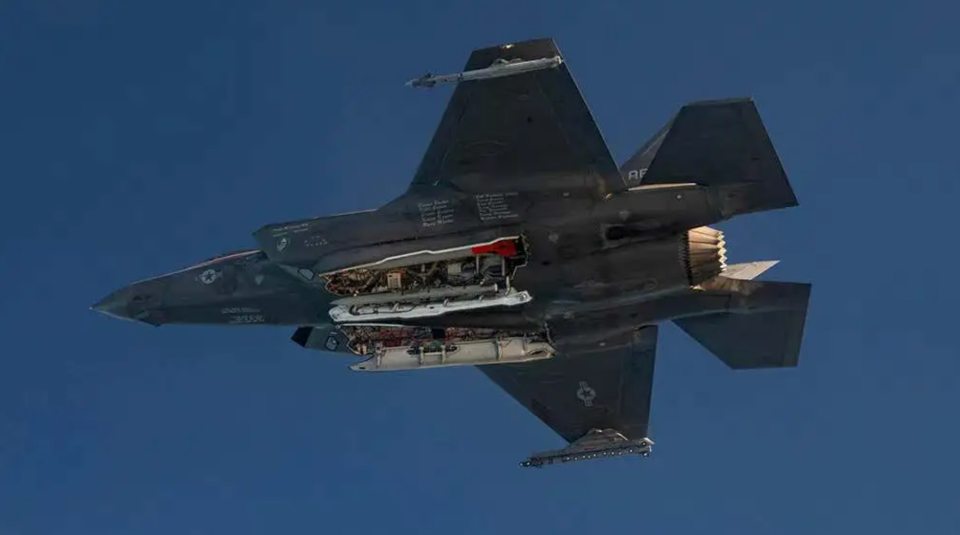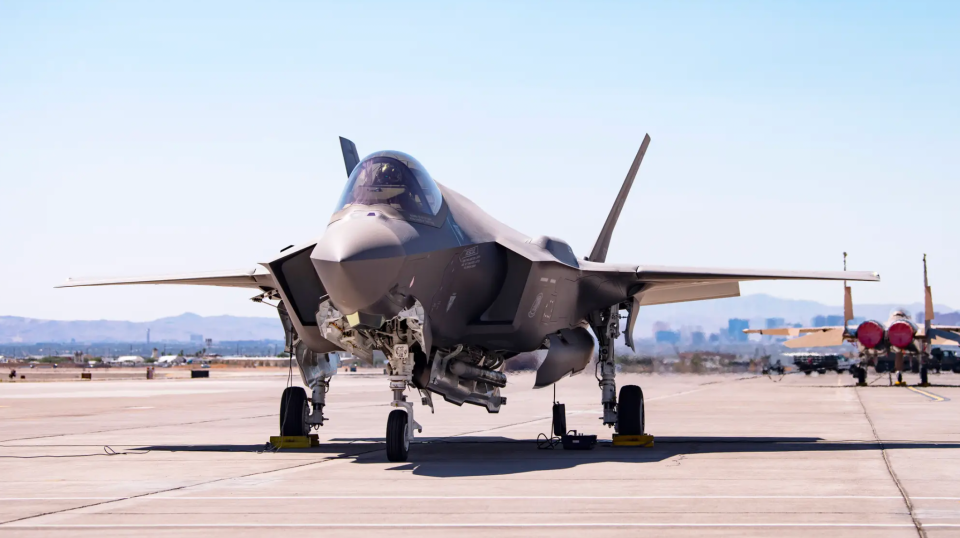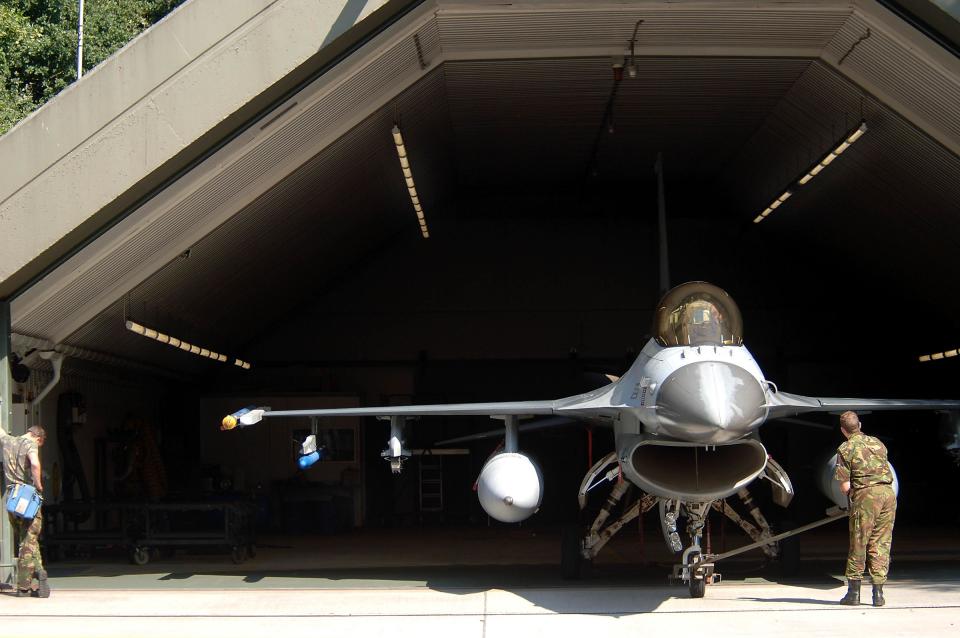Dutch F-35s Gain Nuclear Strike Mission “Initial Certification”

A portion of NATO-operated F-35A stealth fighters in Europe appears to have moved a step closer to becoming fully nuclear-capable platforms, with an announcement from the Netherlands that it has received “initial certification for the deterrence mission.” The U.S. Air Force had previously announced that the aim was to have the F-35A certified to carry the B61-12 nuclear bomb — as a so-called Dual Capable Aircraft (DCA) — by January 2024.

On X (formerly Twitter), Johan van Deventer, the commander of the Dutch Air Combat Command, provided the following statement (which has here been machine-translated):
#ACC “Ready for Operations” was the result of the U.S. team that inspected us this week. This gives us our initial certification for the deterrence mission with the F-35. An important step in the transition. Made possible by teamwork.
https://twitter.com/Jvd_Tweet/status/1722670191232852383
First off, it’s worth noting that official comments on NATO nuclear sharing are uncommon, to say the least. As to the statement, the implication is that U.S. Air Force personnel visited the Dutch Air Combat Command — responsible for the operational Royal Netherlands Air Force (RNLAF) F-35A fleet — and inspected its operational readiness. A determination was made about the RNLAF’s ability to assume the nuclear strike role with the F-35A, resulting in the related certification, although the bombs themselves are not known to have been made available so far.
As well as a photo of an F-35A test jet loaded with test versions of the B61-12 bomb, van Deventer also included a photo of a coin, presumably presented during the visit by the U.S. inspection team. It bears the words “5th Generation Deterrence — Safe, Secure, Reliable.”
https://www.youtube.com/watch?v=Q3GYfY9ERWo
The B61-12, which introduces an inertial navigation system (INS) guidance package, is a 12-foot-long, 825-pound bomb, each one of which is set to literally cost more than its weight in gold. It is a combination of new components, like the precision guidance tail kit, and refurbished components from earlier B61-3, -4, -7, and -10 variants, all of which have variable yields. You can read more about the entire B61 family here.
https://twitter.com/Casillic/status/1722772591071633691
In a February 2022 statement, F-35 DCA Team Materiel Leader Lt. Col. Jason W. Shirley, U.S. Air Force, said: “The Secretary of Defense committed to NATO that we would meet the F-35’s operational nuclear certification need date of January 2024.” Shirley added: “To meet this date, the [F-35 Joint Program Office] had to accelerate the planned design certification date by one year, to January 2023.”
So far, the U.S. Air Force has not announced that its F-35As — or those of any other nation — have been certified to carry the B61-12. The War Zone has reached out to the U.S. Air Force for an update on the status of F-35A DCA and whether operational certification is still planned for January 2024, or if that goalpost has been hit early, as the Dutch tweet suggests.

It’s notable that the initial design certification was already accelerated, with the F-35 DCA Team having completed the developmental test campaign by the end of 2020, a full year ahead of schedule. The F-35 DCA Team involved the F-35 Joint Program Office and the F-35 Integrated Test Force (ITF) at Edwards Air Force Base, California. Its work, according to the U.S. Air Force, “provided data and demonstrations that ensure the safe carriage and separation of the B61-12 thermonuclear gravity bomb on the F-35A.”
According to the Air Force, in the course of 2020, the F-35 DCA Team, working out of Edwards Air Force Base, collected 492 “critical nuclear certification test points” in the course of 19 flight tests and another nine tests on the ground.

Once the developmental test campaign was wrapped up, the F-35 DCA Team began work on receiving nuclear design certification for the B61-12 with the F-35A.
In October 2021, the F-35 JPO announced it had completed nuclear design certification, with a Full-Weapon System Demonstration of an F-35A configured for the nuclear strike role. This milestone then paved the way for the U.S. Air Forces in Europe (USAFE) to start nuclear operational certification training.

The nuclear operational certification only applies to those units with a nuclear mission, with not all F-35As being equipped to carry and employ the B61-12, and not all squadrons receiving the requisite hardware and manpower.
Deployment of the B61-12 in Europe is an issue that we have discussed in the past.
The U.S. Air Force confirmed to The War Zone in 2022 that there are currently no plans for U.S. Air Force or NATO F-16 fighters or Germany’s Panavia Tornado combat jets to be able to leverage the precision-guidance tail kit that is a signature part of the B61-12. At that time, the requirement was only to integrate that particular functionality on U.S. Air Force F-15E Strike Eagle combat jets and B-2A Spirit stealth bombers, as well as the service’s future B-21 Raider stealth bombers, in addition to nuclear-tasked U.S. Air Force and NATO F-35As.

As it stands, B61-12s — whether able to leverage precision guidance or not — are set to replace all of the roughly 150 previous B61 versions currently located at six bases in Europe. This includes bombs prepositioned at facilities in Belgium, Germany, Italy, and the Netherlands, which the U.S. military could make available to the air forces of those countries during a major crisis as part of a NATO nuclear sharing agreement.
As for the Netherlands, in particular, Volkel Air Base hosts an estimated 10-15 B61 nuclear bombs, for delivery by RNLAF F-16s. The Bulletin Of The Atomic Scientists, in its latest report on nuclear weapons sharing, provides the following details about Volkel:
“There are 32 protective aircraft shelters at Volkel Air Base, 11 of which are equipped with WS3s for nuclear weapons storage. Each WSV can hold up to four bombs, for a maximum base capacity of 44 weapons. Recent construction at Volkel Air Base has focused on several new additions. Most notably, over the past two years, a tarmac area with a high wall has been constructed near several aircraft shelters. This area is likely intended for use by the C-17A Globemaster III — the only transport aircraft authorized to move the US Air Force’s nuclear weapons —to provide additional flexibility and facilitation for rapidly moving nuclear weapons on- and off-base. In addition, a high-security building similar to the one being added to Kleine Brogel [in Belgium] has been completed. Similar security-related construction upgrades to those at other nuclear weapons bases in Europe have been visible on satellite imagery at Volkel Air Base.”

The RNLAF expects to declare full operational capability with its F-35A in early 2024. This will only be declared when the fighter can carry out all of the F-16’s assigned missions — including 313 Squadron taking over the DCA mission at Volkel. This timeline would, of course, require B61-12 bombs to be in place by that time.
While there is so far no confirmation of the new weapons now being deployed in Europe, there are signs that the changing strategic environment there, especially as regards Russia, has seen plans to deploy B61-12 bombs to the continent move forward.
In an October 2022 story, Politico, citing “a U.S. diplomatic cable and two people familiar with the issue,” reported that the arrival of the B61-12 in Europe had previously been slated for spring 2023, but was instead planned for December 2023.

“It would be odd to rush it in,” Hans Kristensen, director of the Nuclear Information Project at the Federation of American Scientists, told Politico. “They have been saying we don’t respond to this situation with nuclear weapons. I don’t think they want to go down that one.”

Furthermore, in its 2023 report on nuclear sharing, The Bulletin Of The Atomic Scientists states clearly that the United States is still preparing to deploy the new B61-12 bombs on European soil.
Whatever the status of the B61-12, it is now clear that the Netherlands, at the very least, is gearing up to transfer its nuclear strike commitments to the stealth fighter, with the new evidence that these jets are now certified for the mission. Once the bombs are available, the F-35A, with its ability to deeply penetrate modern air defenses, is set to be a formidable nuclear asset for NATO.
Contact the author: thomas@thedrive.com

